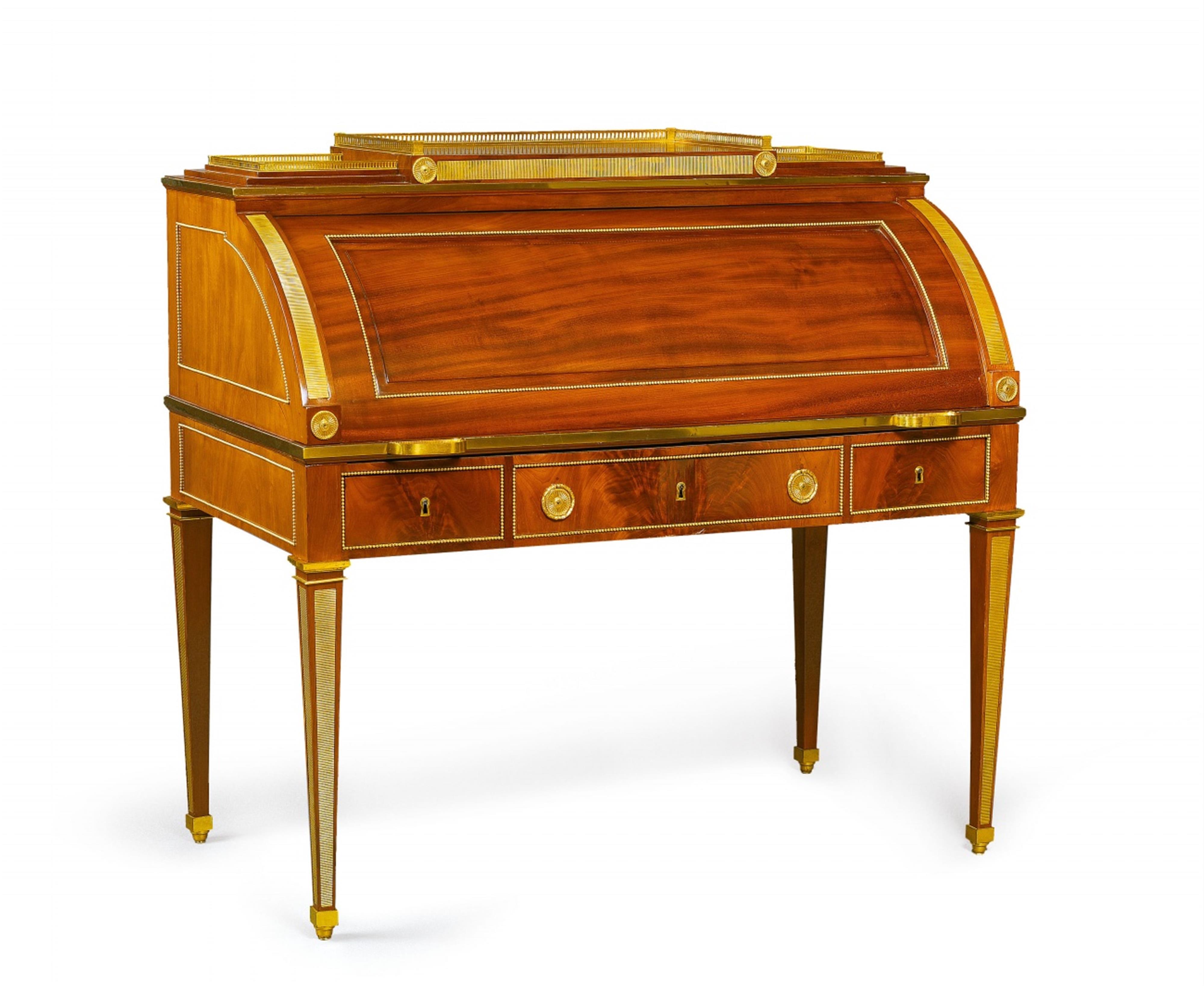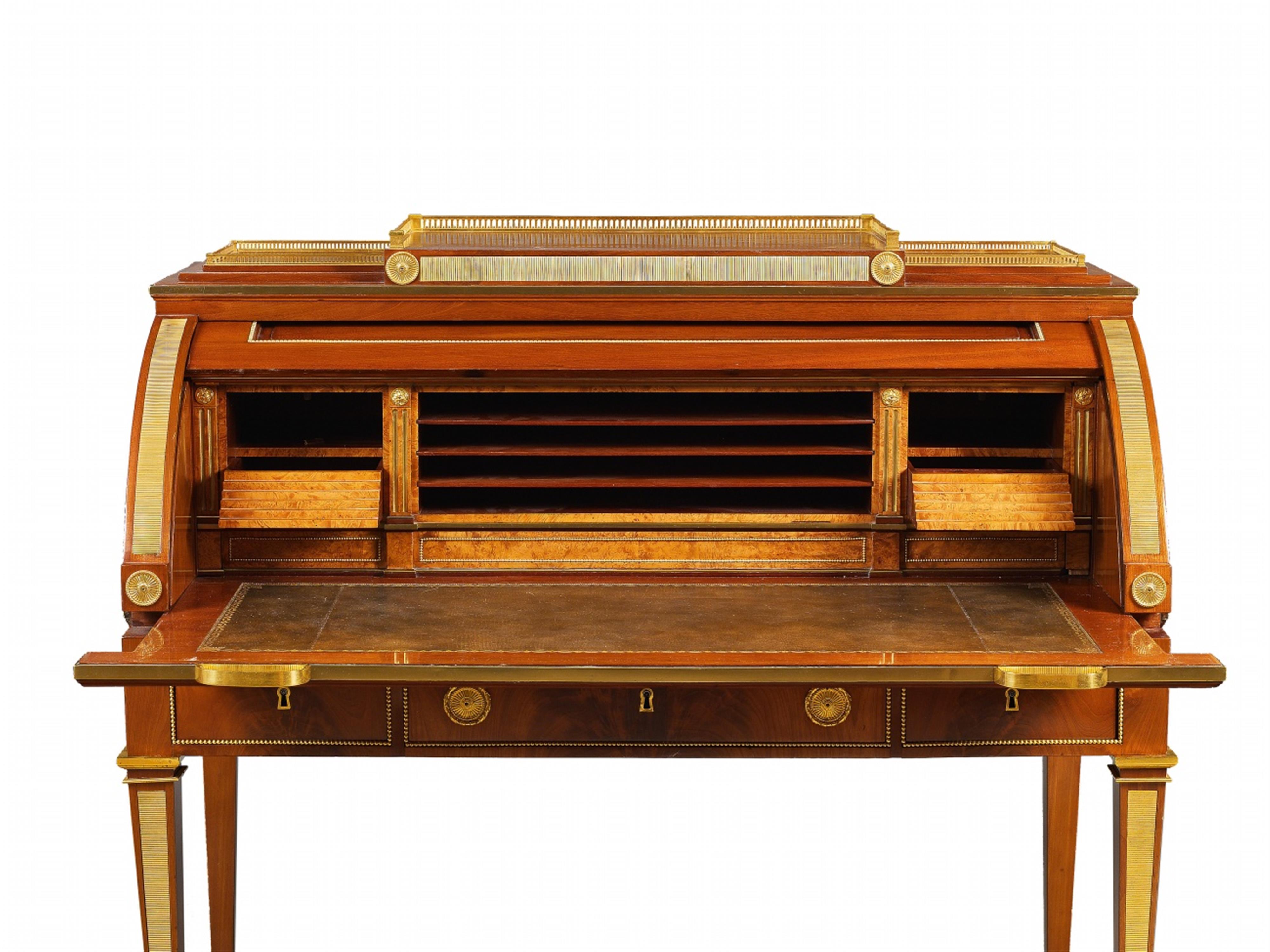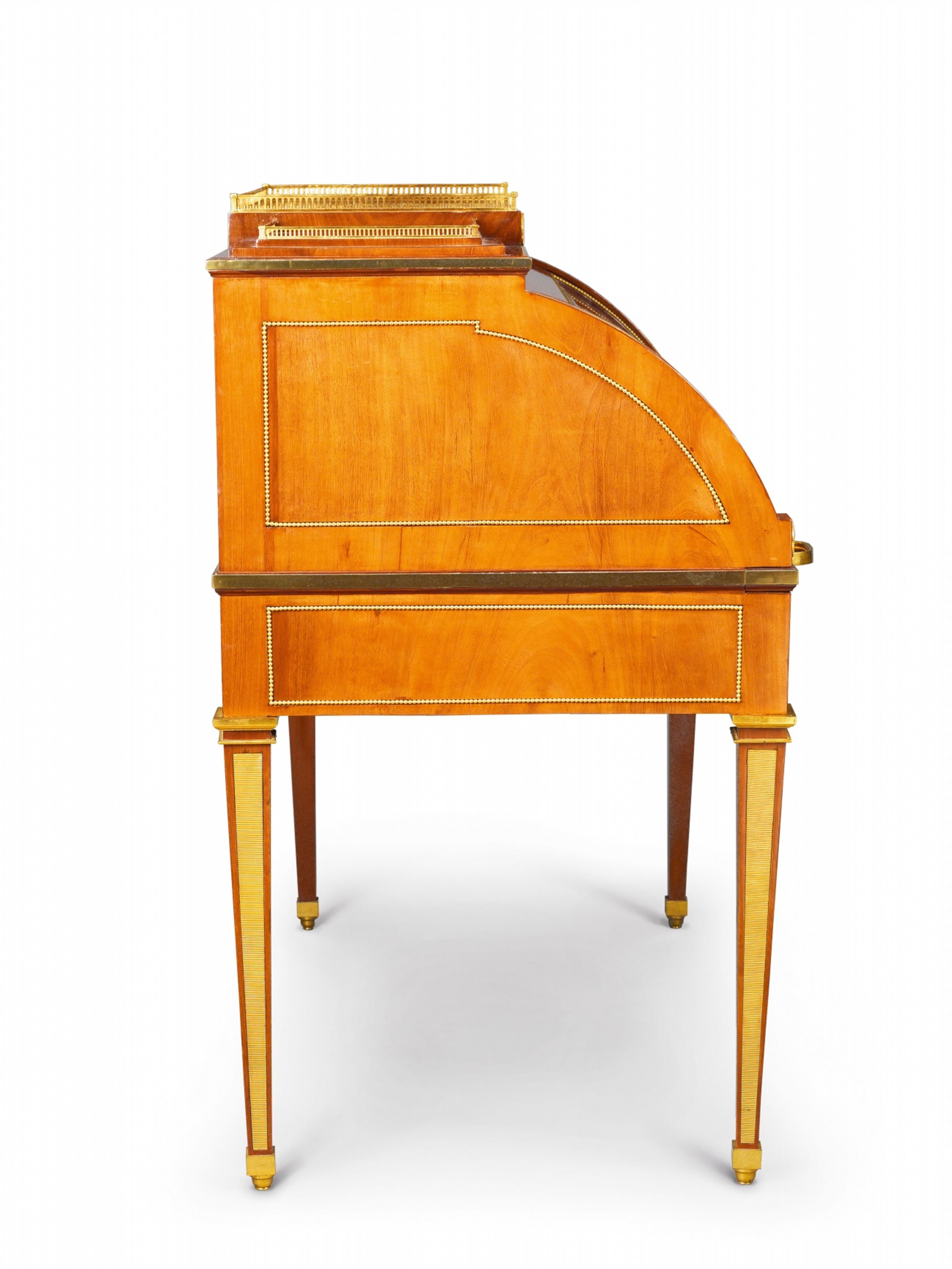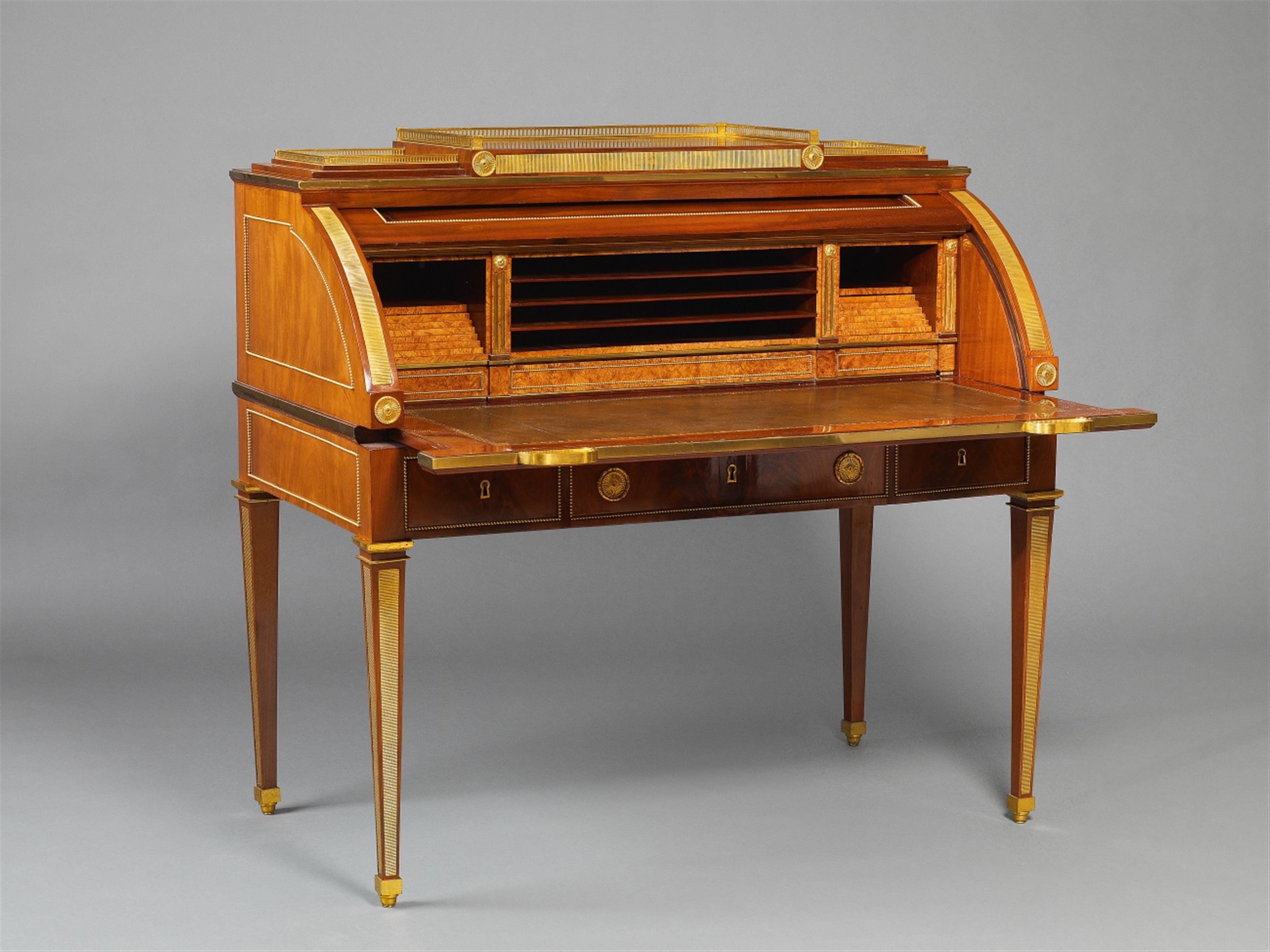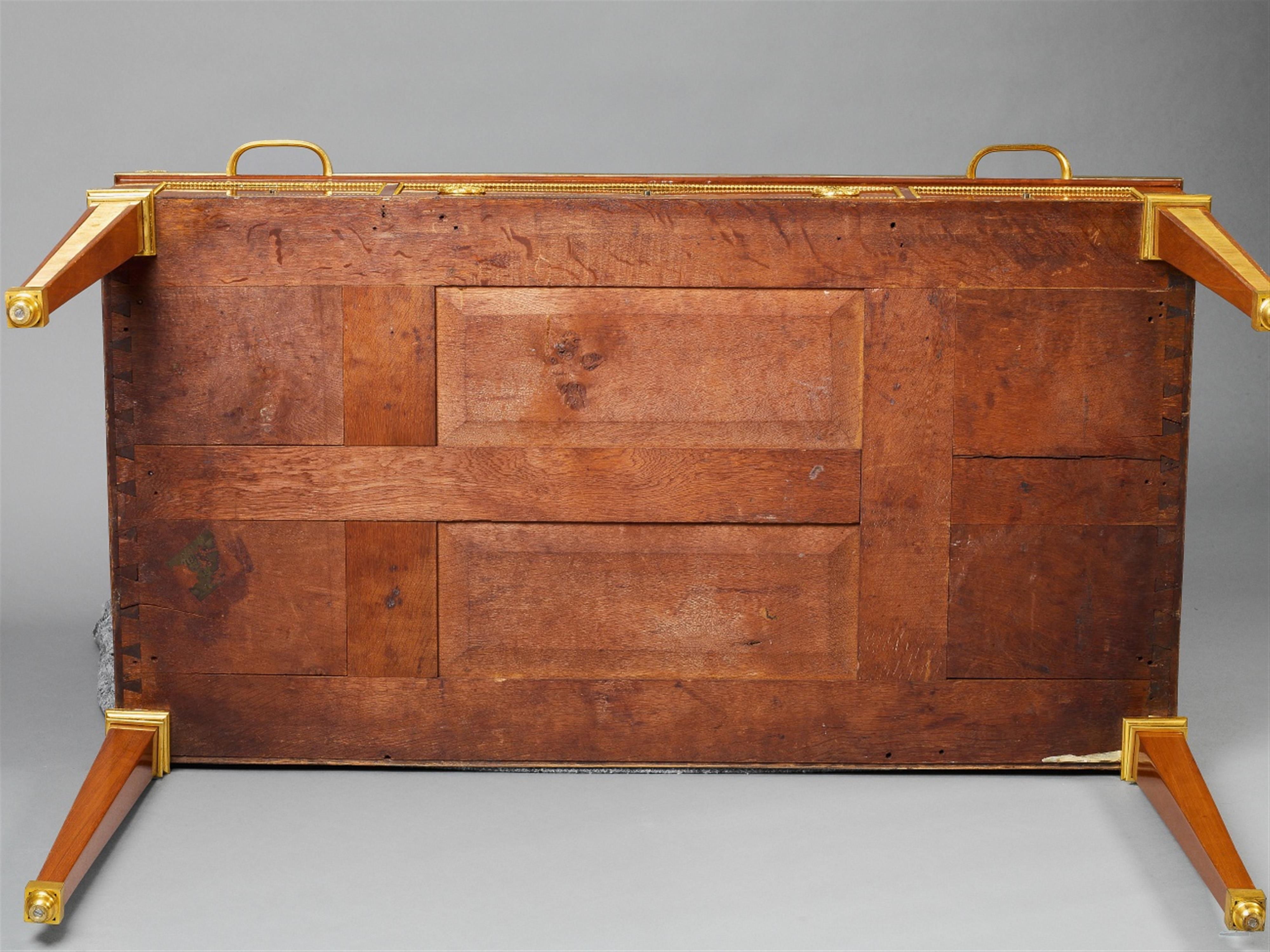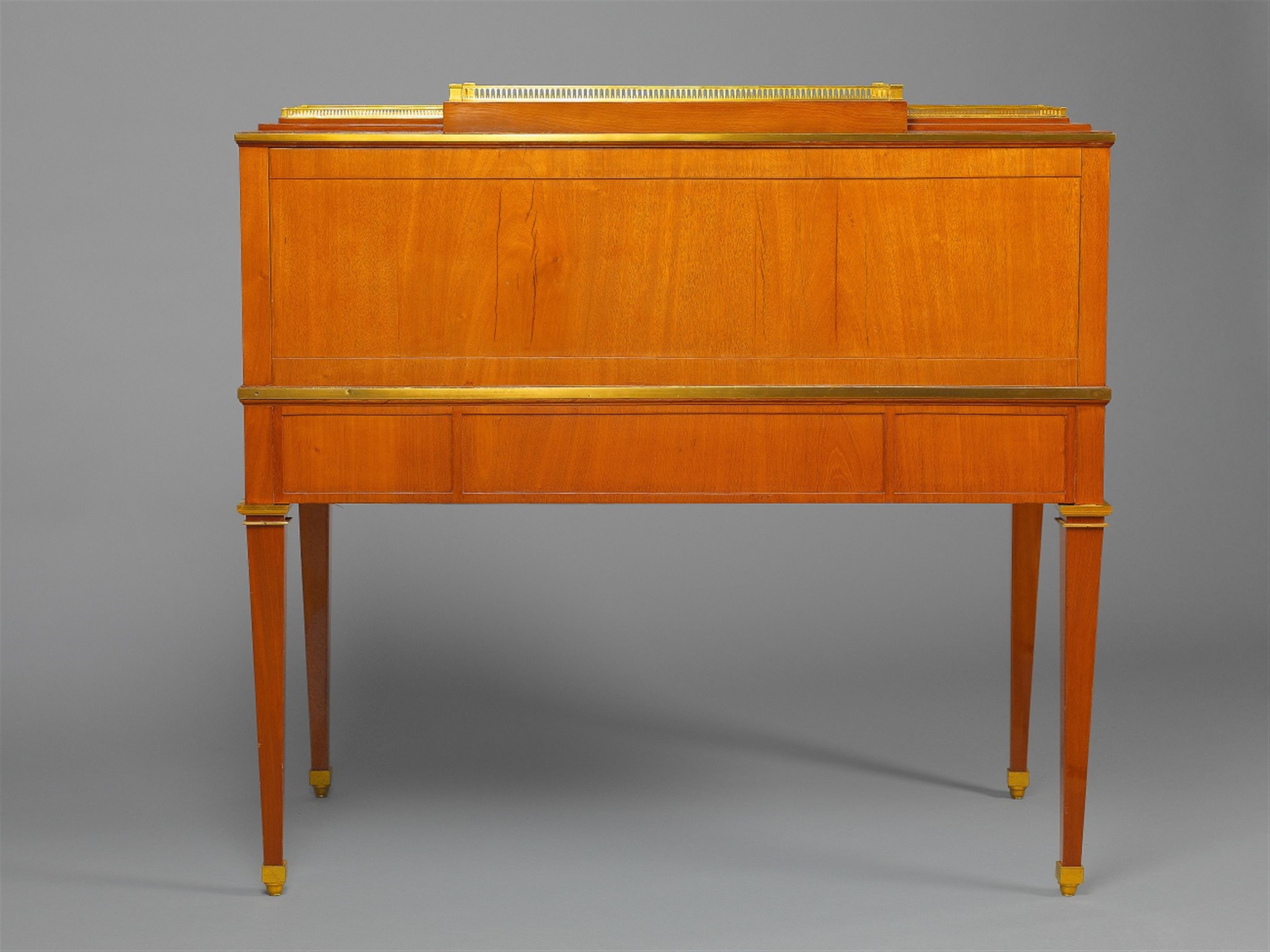An ormolu-mounted David Roentgen mahogany cylinder bureau
The cylinder can be opened by removing the top and conceals three frieze drawers. Two of the compartments and drawers to the interior can be opened via a concealed mechanism and the legs are removable. With remains of an old label. Mountings of the central frieze drawer replaced. H 113.7, W 119.5, D 65 cm.
Neuwied, ca. 1790.
David Roentgen was born in 11th August 1743 in Herrnhaag and died on 12th February 1807 in Wiesbaden. He was the most successful and innovative cabinetmaker of the late 18th century. Roentgen was a member of the Moravian Church of Herrnhut, and this provided his company with a certain degree of financial security, allowing Abraham Roentgen and his son David to work more freely than other furniture makers of their day. Theirs was one of the first cabinetmaker's shops to work independently on commissions for a princely court. As they were also free from the specifications usually prescribed by guild membership, they were able to employ specialists in various areas and therefore produce furniture of the highest possible quality.
David officially took over the workshop from his father in 1772, but had been in operational control long before that. When the workshop came into financial trouble during the Seven Years' War, he organised a furniture raffle in Hamburg in 1769 with great success. This not only served to pay off the company's debts, but also provided it with nationwide recognition. Through clever marketing throughout the mid-1770s, Roentgen was later able to establish his firm in Paris. He joined the guild of Menuisiers-Ebénistes in 1780 and was awarded the title "Ebeniste-mécanicien du Roi et de la Reine" by the French court. David Roentgen travelled to St. Petersburg in 1783 and managed to sell over 300 pieces of furniture to Tsarina Catherine II. In retrospect, this business venture can be considered one of the greatest logistic achievements of the era.
After taking over his father's workshop, David Roentgen continued the production of drop-fall writing desks, but also added this new type of roll-front cylinder bureau to the selection of products. Roentgen was not the inventor of this design, as Riesener and Oeben are known to have produced opulent models of this kind for the French court, but his introduction of the solid cylinder front connected to the sliding writing surface, as opposed to earlier models formed from wooden slats, was truly an innovation. This new type opened much more smoothly and could be decorated with larger areas of marquetry.
The present work had several predecessors with similar proportions and size. The earliest desk of this kind was made for Maria Fedorovna and kept in Pavlovsk palace, where it still stands in the chamber of the ladies in waiting to this day. The Tsarina presented another piece from Pavlovsk palace, which is today kept in an American private collection, to her daughter Catherine. Two other identical pieces have appeared on the art market in recent years.
Provenance
Otto v. Mitzlaff art dealers, auctioned by Christie´s London, 13th June 2002, Lot 146
The Oberkirch collection
Literature
Cf. Extravagant Inventions, The princely furniture of the Roentgens, New York, 2012, cat. 59.
Cf. Fabian, Roentgen Möbel aus Neuwied, Bad Neustadt, 1986, p. 96, illus. 124.
Cf. Greber, Abraham und David Roentgen, Möbel für Europa, vol. 1, Starnberg 1980, p. 243.
Cf. Greber, Abraham und David Roentgen, Möbel für Europa, vol. 2, Starnberg 1980, illus. 678ff.

